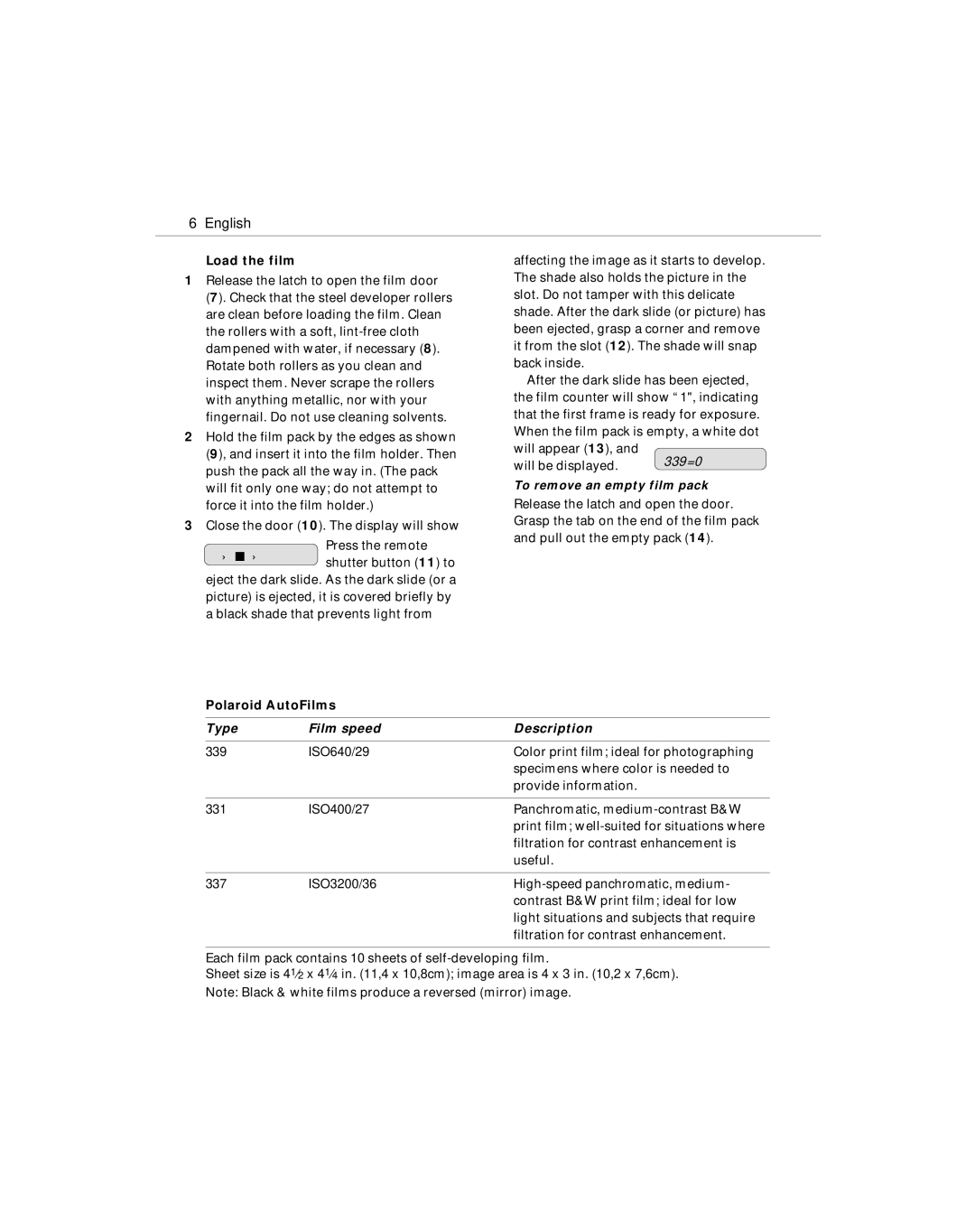
6English
Load the film
1Release the latch to open the film door
(7). Check that the steel developer rollers are clean before loading the film. Clean the rollers with a soft,
2Hold the film pack by the edges as shown (9), and insert it into the film holder. Then push the pack all the way in. (The pack will fit only one way; do not attempt to force it into the film holder.)
3Close the door (10). The display will show
Press the remote
− ■ −shutter button (11) to eject the dark slide. As the dark slide (or a picture) is ejected, it is covered briefly by a black shade that prevents light from
Polaroid AutoFilms
affecting the image as it starts to develop. The shade also holds the picture in the slot. Do not tamper with this delicate shade. After the dark slide (or picture) has been ejected, grasp a corner and remove it from the slot (12). The shade will snap back inside.
After the dark slide has been ejected, the film counter will show “1", indicating that the first frame is ready for exposure. When the film pack is empty, a white dot
will appear (13), and | 339=0 | |
will be displayed. | ||
|
To remove an empty film pack
Release the latch and open the door. Grasp the tab on the end of the film pack and pull out the empty pack (14).
Type | Film speed | Description |
|
|
|
339 | ISO640/29° | Color print film; ideal for photographing |
|
| specimens where color is needed to |
|
| provide information. |
|
|
|
331 | ISO400/27° | Panchromatic, |
|
| print film; |
|
| filtration for contrast enhancement is |
|
| useful. |
|
|
|
337 | ISO3200/36° | |
|
| contrast B&W print film; ideal for low |
light situations and subjects that require filtration for contrast enhancement.
Each film pack contains 10 sheets of
Sheet size is 41⁄2 x 41⁄4 in. (11,4 x 10,8cm); image area is 4 x 3 in. (10,2 x 7,6cm). Note: Black & white films produce a reversed (mirror) image.
